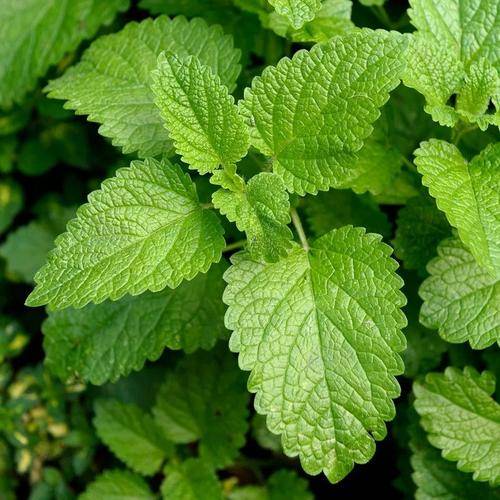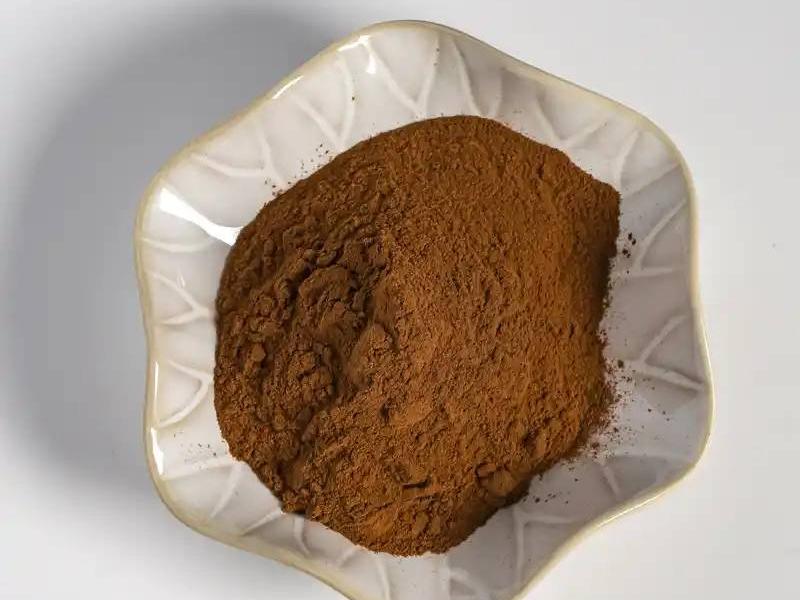Lemon Balm Extract: A Functional Food Ingredient Solution for Mood Support
Against the backdrop of increasingly prevalent global issues of insomnia and emotional health, more consumers are seeking safe, natural solutions to improve sleep quality and alleviate daily stress. Lemon balm (Melissa officinalis L), a traditional natural plant used for calming emotions and promoting sleep, is gaining significant attention in the modern functional food sector. Its extract, rich in bioactive compounds and renowned for its soothing properties, has become an ideal ingredient for developing foods targeting emotional well-being and sleep support.
Green Spring Technology leverages advanced plant extraction techniques and stringent quality control systems to provide high-purity, stable lemon balm extract. We are committed to delivering standardized, scalable, and traceable natural ingredient solutions, empowering businesses to create safe, effective, and market-responsive functional foods.

1 Lemon Balm Extract: Synergistic Multi-Active Ingredients Empowering Health Food Innovation
As a natural botanical ingredient, lemon balm extract is rich in multiple high-value active components, including flavonoids, polyphenols, and terpenoids, demonstrating broad application potential in functional foods, dietary supplements, and health beverages.
1.1 Flavonoids: Antioxidant and Health Maintenance
Lemon balm extract contains multiple flavonoids such as quercetin, luteolin, and rutin. Research indicates these components possess strong free radical scavenging capabilities, helping alleviate oxidative stress and support overall health. Quercetin and luteolin also aid in maintaining cellular vitality and metabolic balance, making them suitable for developing antioxidant, sports recovery, and daily health maintenance food and beverage products.
1.2 Diversified Applications of Polyphenolic Compounds
Lemon balm extract is rich in polyphenolic components like rosmarinic acid, caffeic acid, and protocatechuic acid. Rosmarinic acid and caffeic acid exhibit excellent antioxidant properties, protecting both the product itself and human cells from oxidative damage; protocatechuic acid supports the nervous system. These components are suitable for antioxidant formulations, neurohealth products, and clean-label products using natural stabilizers as alternatives to synthetic antioxidants.
1.3 Terpenes: Combining Flavor and Function
Terpenes in lemon balm extract—such as citronellal, geraniol acetate, and caryophyllene—not only impart its distinctive fresh aroma but also exhibit bioactive properties that enhance both sensory appeal and functional value. These components are particularly suitable for developing functional essential oil foods, mood-supporting beverages, and natural flavoring products.
Lemon balm extract demonstrates significant synergistic effects among its multiple components. Its natural origin and versatile application forms make it suitable for various product types—including gummies, solid beverages, capsules, and essential oil-based foods—empowering brands to create differentiated, multifunctional health products.
2 Natural Lemon Balm Extract: An Ideal Ingredient for Mood and Sleep Support Functional Foods
Lemon balm extract is gaining increasing attention in the functional food industry due to its natural mood-relaxing and sleep-supporting properties. This ingredient contains multiple active components, offering comprehensive application value.
For emotional health, rosmarinic acid in lemon balm extract helps maintain neurotransmitter balance, supporting emotional stability and mental clarity. Synergistic effects with natural compounds like caffeic acid and citral further enhance soothing effects. Research indicates this extract promotes exploratory behavior and positive responses, providing reliable evidence for related functional food development.
The extract also demonstrates exceptional antioxidant properties. Polyphenols like rosmarinic acid and caffeic acid effectively neutralize free radicals, reduce oxidative stress, and protect cellular health. In vitro experiments show that cell models treated with lemon balm extract exhibit significantly enhanced vitality and antioxidant capacity, offering dual advantages for extending functional food shelf life and boosting health protection.
Furthermore, the lemon balm extract possesses inherent natural antimicrobial properties. Key active components like citral and citronellal inhibit various microorganisms, opening new possibilities for developing clean-label functional foods.
This ingredient is suitable for sleep-aid beverages, mood-regulating gummies, relaxation teas, and diverse health snacks, helping your products establish differentiated advantages in the market.

3 Green Spring Technology's Lemon Balm Extract Delivers Reliable Solutions for Health Products
Green Spring Technology specializes in plant-based active ingredient extraction. Leveraging advanced low-temperature extraction techniques and standardized production systems, we provide customers with high-purity, high-bioavailability lemon balm extract. We fully recognize the challenges businesses face when developing mood health and sleep support products—including inconsistent ingredient stability, fluctuating active component levels, inconsistent efficacy, and compliance risks.
To address these concerns, Green Spring Technology has established a comprehensive, end-to-end quality control system. This ensures quantitative standardization of key active components such as polyphenols, flavonoids, and terpenoids, guaranteeing each batch possesses a reliable composition profile and consistent efficacy. This significantly reduces technical uncertainties for companies during product formulation and large-scale production.
Our lemon balm extract powder ingredient is suitable for developing various dosage forms, including softgels, solid beverages, pressed candies, and functional gummies. It empowers companies to create scientifically backed, consumer-attractive health products for sleep management, emotional relaxation, and antioxidant support. Beyond supplying ingredients, Green Spring Technology aspires to be your technical partner in product innovation, offering one-stop solutions from ingredient analysis and formulation recommendations to regulatory consulting.
To request complimentary samples, obtain comprehensive technical documentation, or discuss customized collaborations, please contact us at helen@greenspringbio.com or WhatsApp: +86 13649243917. Our technical team stands ready to support you in advancing innovation and breakthroughs in natural health products.
References
[1]Liu Rui, Meng Fang, Bai Huai. Research on the inhibitory effect of quercetin, rutin and puerarin on the oxidative modification of LDL [J]. Chinese Journal of Traditional Chinese Medicine, 2007, 32 (19): 2085-2062.
[2]Zhao Liting, Guo Changjiang, Cai Donglian, et al. Effects of quercetin supplementation on the antioxidant system of rat peripheral blood [J]. Journal of the Armed Police Medical College, 2009, 18 (4): 269-279.
[3]Sun Juan, Yu Shichun. Research progress of quercetin [J]. Modern Chinese Medicine Research and Practice, 2011, 25(3): 85- 87.
[4]Wang J S, He Y, Hua Z C, et al. Research progress on the pharmacological effects of luteolin [J]. Life Sciences, 2013, 25(6): 561- 564.
[5]Zhou D, Liu A, Du G. Pharmacological research progress of rosmarinic acid [J]. Chinese Journal of New Drugs, 2011, 20(7): 594-597.
[6]Fan J, Cai X, Feng X, et al. Study on the in vitro antioxidant activity of caffeic acid [J]. Chinese Journal of Food Science, 2015, 15(3): 66- 71.
[7]Zhang Xiuli, Li Yachen, Niu Xinhua, et al. Effects of protocatechuic acid on the antioxidant capacity of brain tissue in Parkinson's disease model mice [J]. Advances in Modern Biomedicine, 2011, 17(12): 3249- 3251.
[8]Sofowor a A,Ogunbodede E,Onayade A. The role and place of medicinal plants in the strategies for disease prevention[J]. Afr J Tradit Complement Alter n Med. ,2013,(10): 210- 229.
[9]Gurck L,DubravskaR,Mikl ovicova. Economics of the cultivation of Sal officinalis and Melissa officinalis[J]. Agric. Econ. Czech. , 2005,51: 348- 356.
-
Prev
Stress Relief+Natural Antibacterial Properties: Lemon Balm Essential Oil Empowers Health Product Innovation
-
Next
Empower Your Mood Health Supplements With Natural Lemon Balm Extract


 English
English French
French Spanish
Spanish Russian
Russian Korean
Korean Japanese
Japanese




